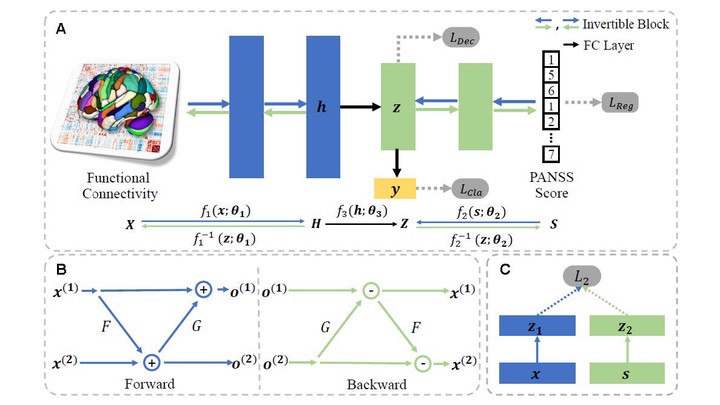
Abstract
Mining potential biomarkers of schizophrenia (SCZ) while performing classification is essential for the research of SCZ. However, most related studies only perform a simple binary classification with high-dimensional neuroimaging features that ignore individual’s unique clinical symptoms. And the biomarkers mined in this way are more susceptible to confounding factors such as demographic factors. To address these questions, we propose a novel end-to-end framework, named Dual Spaces Mapping Net (DSM-Net), to map the neuroimaging features and clinical symptoms to a shared decoupled latent space, so that constrain the latent space into a solution space associated with detailed symptoms of SCZ. Briefly, taking functional connectivity patterns and the Positive and Negative Syndrome Scale (PANSS) scores as input views, DSM-Net maps the inputs to a shared decoupled latent space which is more discriminative. Besides, with an invertible space mapping sub-network, DSM-Net transforms multi-view learning into multi-task learning and provides regression of PANSS scores as an extra benefit. We evaluate the proposed DSM-Net with multi-site data of SCZ in the leave-one-site-out cross validation setting and experimental results illustrate the effectiveness of DSM-Net in classification, regression performance, and unearthing neuroimaging biomarkers with individual specificity, population commonality and less effect of confusions.